First, a dragonfly larva—it’s called a nymph—climbs out of the water. Second, the dragonfly adult climbs out of its the larval exoskeleton—it’s called an exuvia. Doing this is quite a trick, for once it emerges, the adult will become much larger: longer abdomen and expansive wings. All of this content was initially scrunched up inside the exuvia.
The exuvia splits open, the adult pulls itself out and then begins to pump fluid into its collapsed wings and abdomen causing them to gradually expand to full size.
This Pale Snaketail had already pulled its abdomen out of the exuvia by the time my grandson, Finn, pointed it out to me: “Granddad, do dragonflies moult?” The wings are still collapsed and the abdomen is not yet fully extended. The exuvia is the dark shape to the lower right of the dragonfly, and a few minutes before, it fitted inside this.
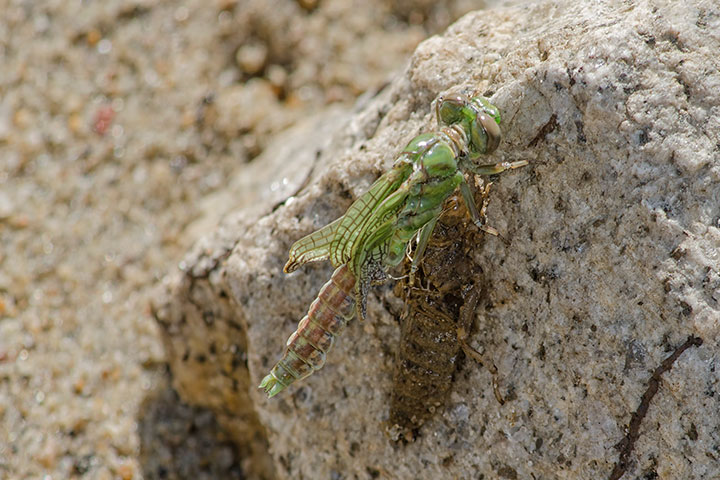 Gradually the wings and the abdomen expanded as fluid was pumped into them.
Gradually the wings and the abdomen expanded as fluid was pumped into them.
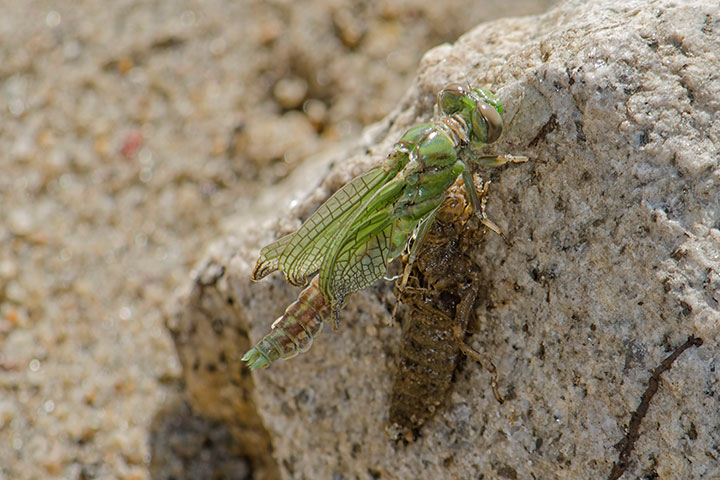
Expansion continued and now the wings extended beyond the end of the abdomen.
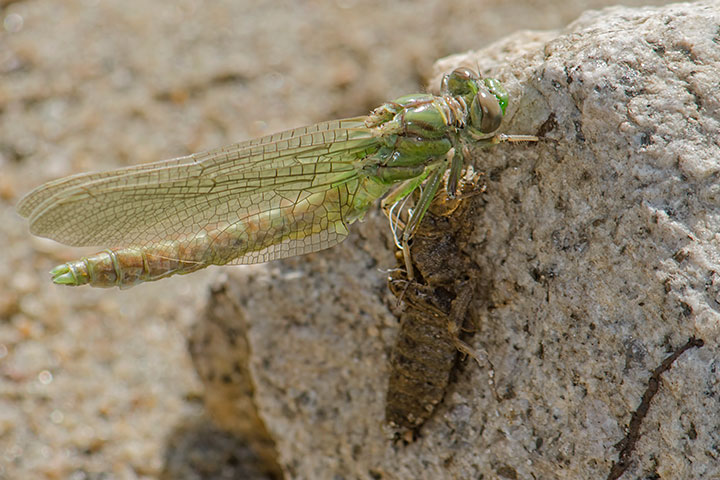
Suddenly, the wings swung out to the sides. Even so, they have creases in them and haven’t hardened.
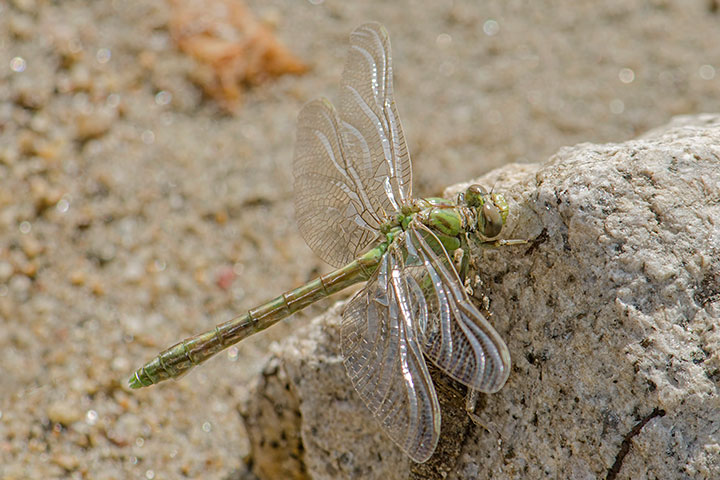
Nevertheless, the dragonfly tries a short flight. It is still weak and quickly lands again to continue the expansion and hardening of its wings. An hour later it will be off on its way.
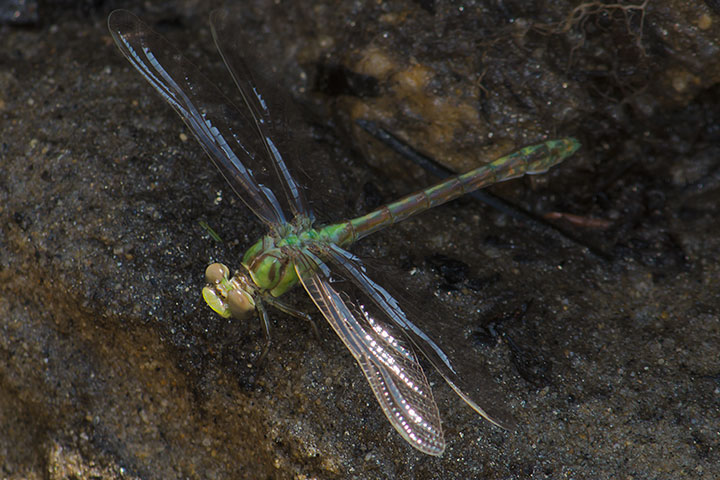

Well done! Your grandson has a sharp eye.
Nicely documented Alistair, I will pass this one on to my grandchildren. Thanks for the play by play. Finn must also possess some patience to wait for this process to unfold. (pun intended)
This was awesome to see. I watch cicada unfolding, hardening their wings and flying off. Your photo’s are amazing. Thank you.